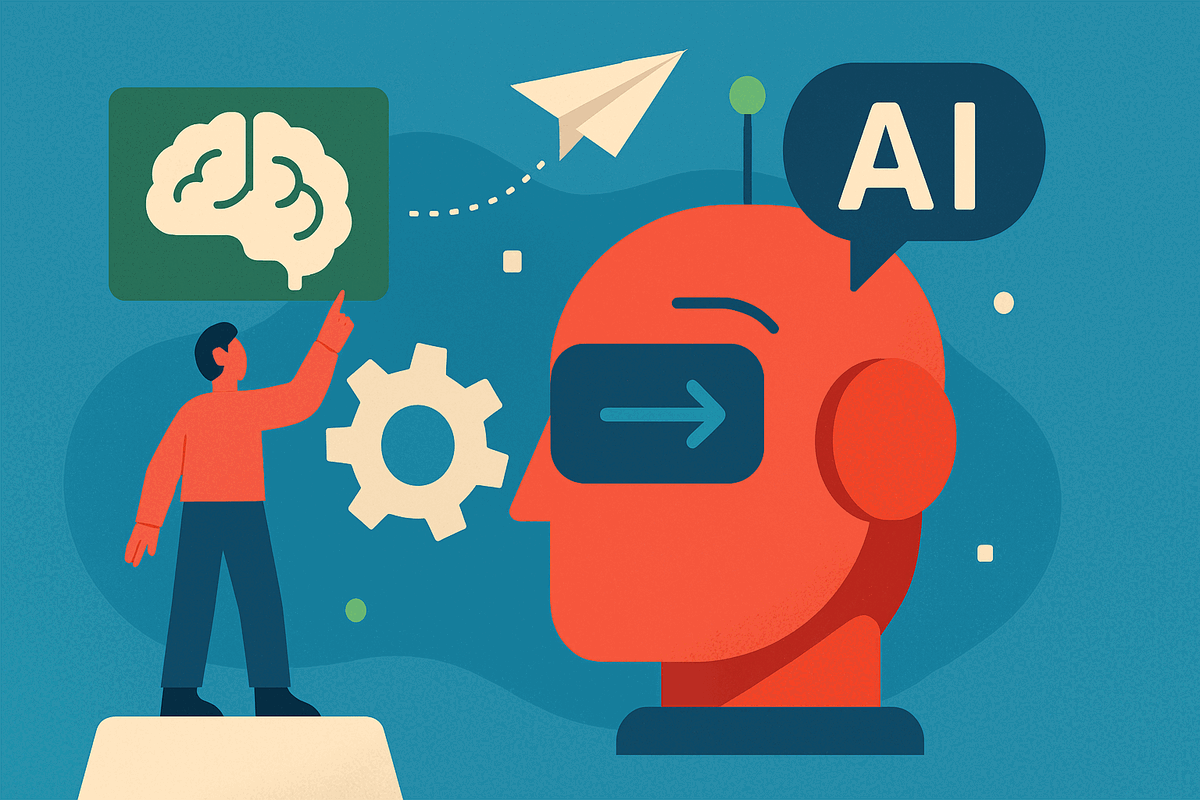What Shopify’s AI Memo Gets Wrong (and How to Get It Right)

- 14 Apr, 2025
I started my career playtesting video games. I wasn’t some prodigy developer—I was at the bottom of the skill ladder, doing the kind of work that doesn’t make it into origin stories. But I was lucky: I got to work with brilliant engineers. I watched how they thought. I paired with them. I spent hours pouring over code to fix a random bug that turned out to be an uninitialized pointer.
I got my code reviewed—sometimes shredded. And over time, I leveled up.
That experience—the slow, hands-on grind of learning by doing—is why I can use AI tools effectively today. I know what good looks like. I know how to break problems down. I know where to question the AI’s answer. But that foundation didn’t come from a prompt—it came from years of shared experience with other humans.
That’s why, when I read Shopify CEO Tobi Lütke’s recent internal memo about making AI fluency a baseline expectation, I felt both energized and concerned.
He’s right: AI is a game changer. But we also need to talk about what this shift might cost us if we’re not careful.
Here’s what I think the memo gets wrong—or at least doesn’t go far enough on—and what we can do about it.
1. AI Fluency ≠ AI Integration
Using AI reflexively is a good start, but it’s not the endgame.
The real transformation happens when AI isn’t just a tool you use, but something you design your systems, workflows, and strategies around. When I built Mio Vino, I didn’t just prompt ChatGPT for ideas—I used AI as my product manager, designer, engineer, database admin, marketer, and QA. I architected a product development loop around AI from the ground up.
If your org is still treating AI like a helper on the side, you’re missing the bigger shift.
2. Speed Isn’t the Main Advantage—Clarity Is
Yes, AI makes things faster. But what really blew me away was how it clarified my thinking.
My breakthrough came when I stopped asking AI to do big, complex tasks and started breaking work into small, defined steps. I wasn’t just accelerating product development—I was becoming a better product thinker.
That clarity doesn’t come from more velocity. It comes from collaborating with AI, not delegating to it.
3. AI Can Accelerate Stagnation, Too
The memo talks about AI as a multiplier. That’s true. But like any multiplier, it amplifies what’s already there.
If your processes are broken, AI will help you break them faster. If your team doesn’t know what good looks like, AI will help you scale mediocrity.
Companies need to pair AI usage with intentional design thinking, feedback loops, and a clear understanding of what “better” means. AI is a lever—where you place it matters.
4. Are We Still Growing Engineers?
This brings me back to the beginning of my career.
The foundational learning—seeing the craft up close—is why I can use AI well today.
But if junior engineers never get those reps because AI is doing the “grunt work,” where does that learning come from? Do we care? Or is this just the next evolution, like moving on from assembly and C?
I don’t have a definitive answer. But I do think we’re at risk of skipping a generation of engineers who understand why things work, not just how to prompt a tool to do them.
Leaders need to think about how we foster learning in this new environment—because mentoring, context, and curiosity don’t come pre-installed with Cursor or Copilot.
5. AI Isn’t a Sidekick. It’s a Strategic Asset
There’s a subtle message in the memo: AI is a productivity enhancer. But I think that undersells it.
AI isn’t just a co-pilot. It’s becoming a co-architect. A strategy partner. A multiplier for creativity and ambition. When I built Mio Vino, AI didn’t just speed me up—it unlocked the ability to build a product I never would’ve attempted with a traditional team.
The organizations that treat AI as a strategic input—not just a tactical tool—are the ones that will redefine what’s possible.
The Takeaway
Tobi’s memo gets a lot right. AI should absolutely be a reflex. But the bigger shift isn’t just in our tools—it’s in our operating systems.
AI isn’t something you use. It’s something you build around.
It’s not hype. It’s here. And if you’re a leader trying to turn that into results, I’ve been in the trenches.
From zero to App Store in 30 days, powered entirely by AI. No full-time team. No funding. Just clear goals, fast learning loops, and a willingness to rethink the playbook.
Let’s talk about how AI can become your competitive advantage—not someday, but now.
Stay Ahead in Product Management!
Ready to elevate your product management game? Join our community of passionate professionals and be the first to receive exclusive insights, tips, and strategies directly in your inbox. Subscribe now to our newsletter and ensure you're always in the loop with the latest product management trends and wisdom bombs!